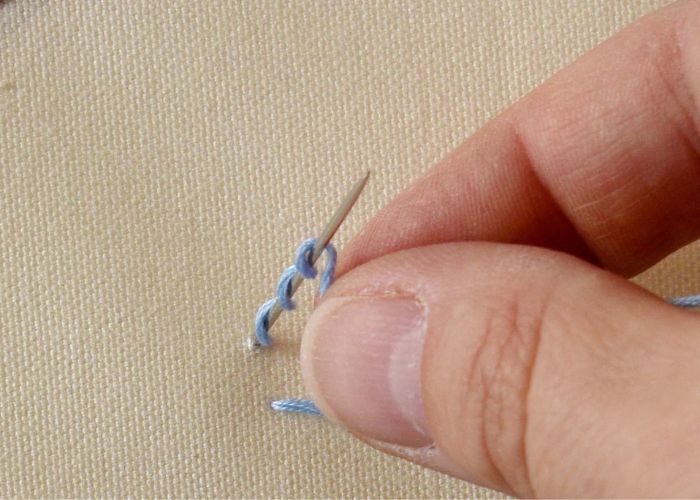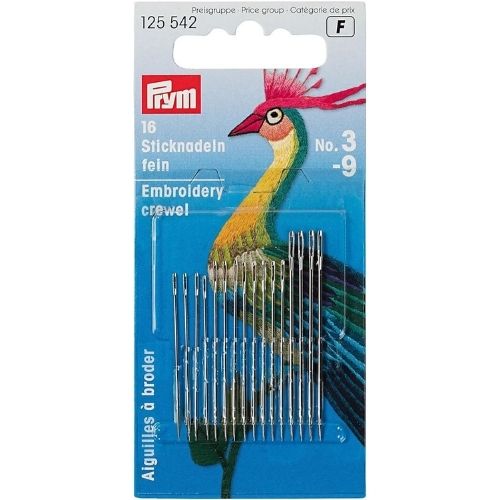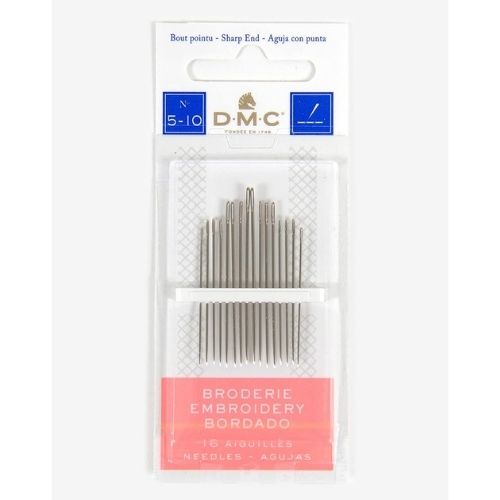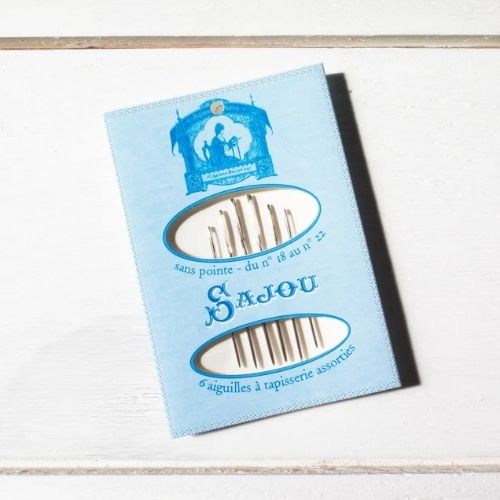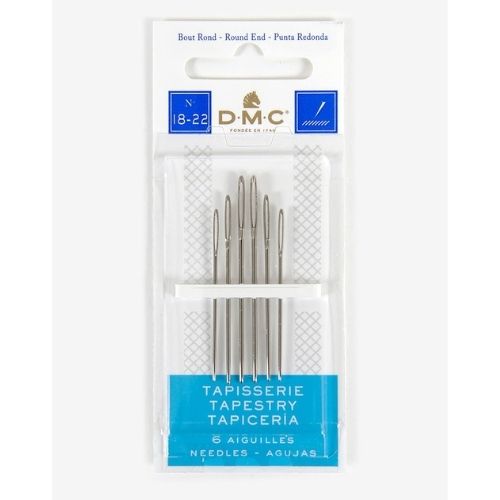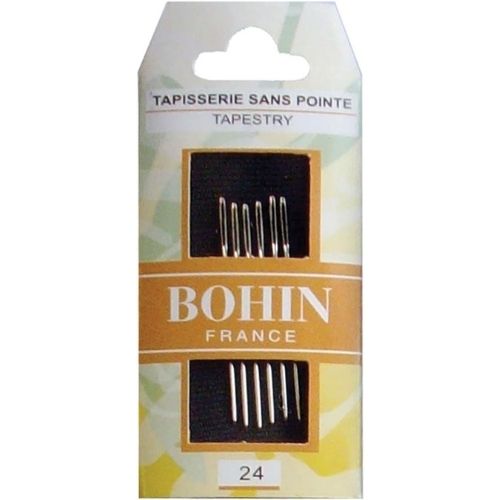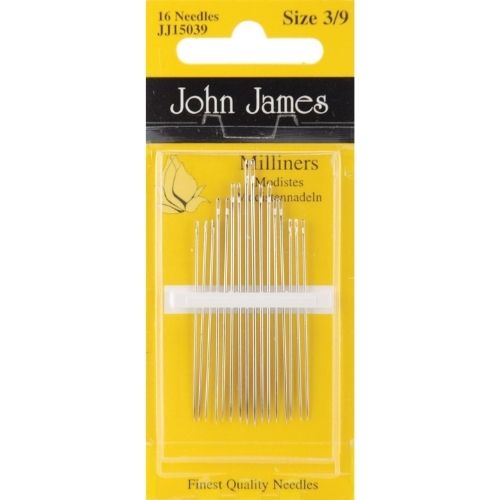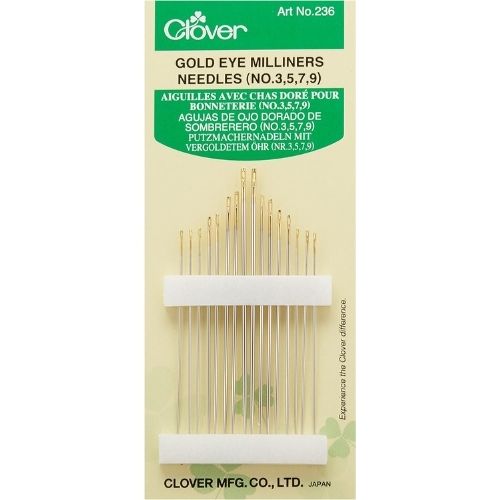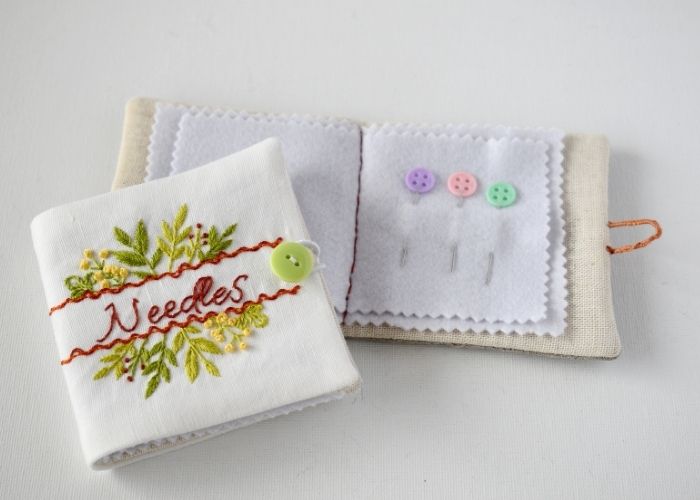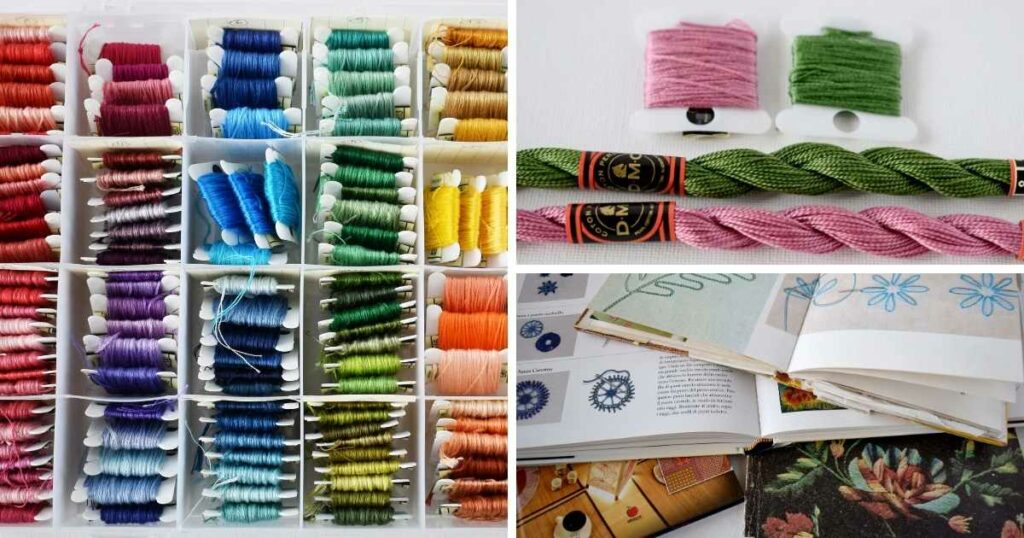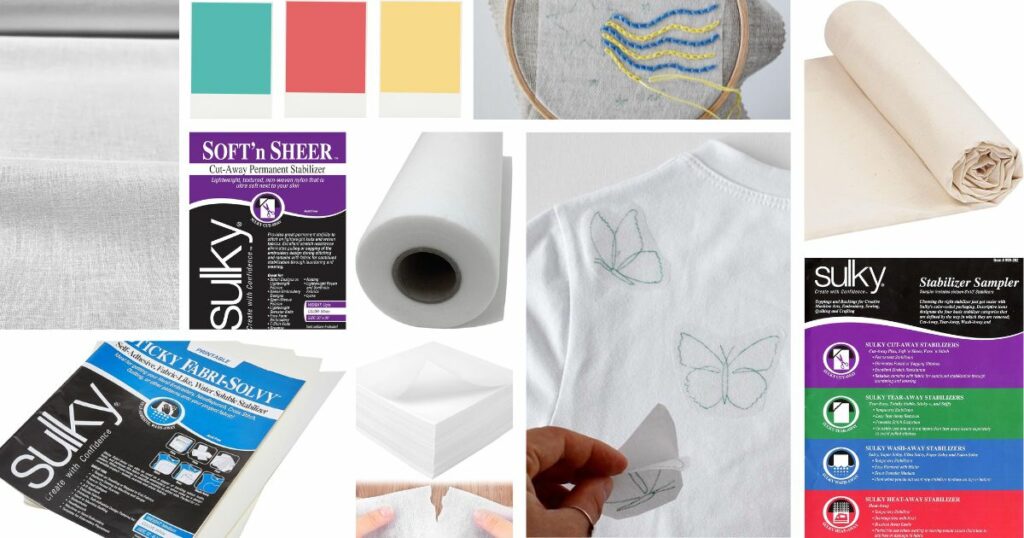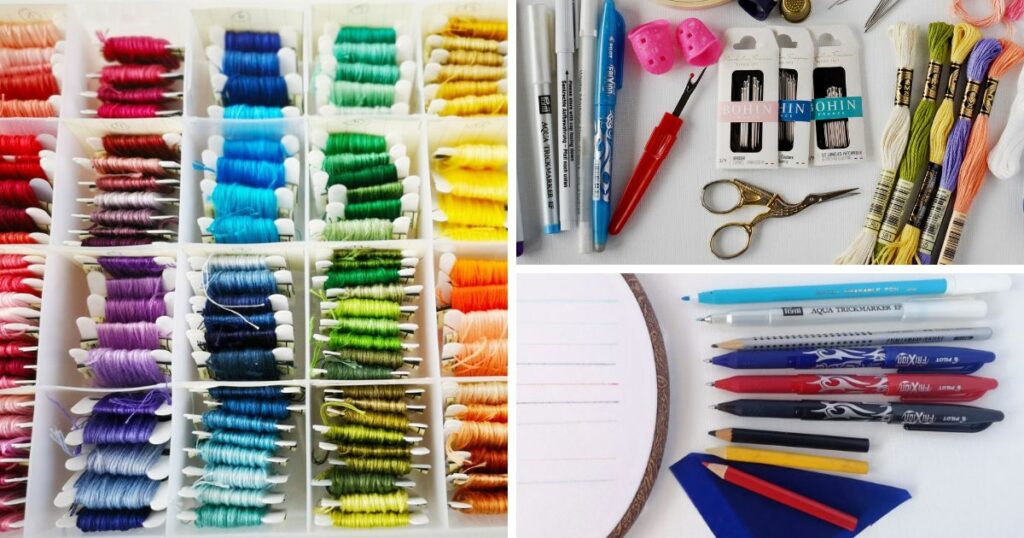Hand Embroidery Needles: The Ultimate Guide to Choosing the Right One
There are so many different types of needles, and it is so hard to find a needle in a haystack! But what about choosing the best hand embroidery needle from a bunch of needles? Is it much easier?
You’ve probably already discovered that not all needles are the same. They vary in size and shape and are made for different purposes. So do we need them all? If not, which ones should be on our list and why?
Why the correct hand embroidery needle matters
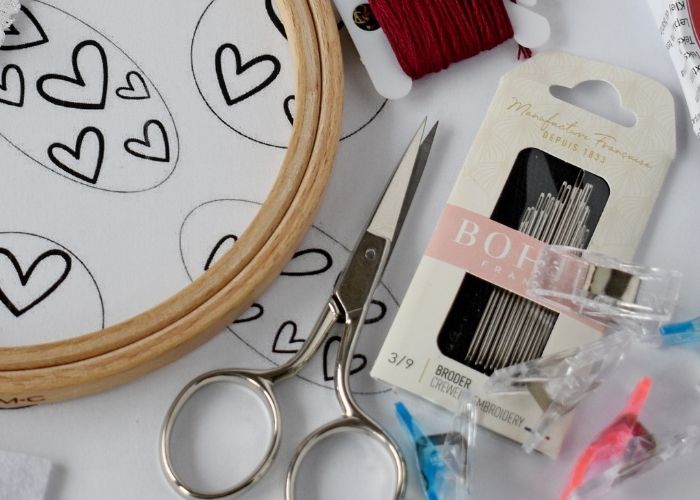
Choosing the right needle will make your hand embroidery process more pleasant and easier. Some time ago, I struggled with bullion knots and French knot stitches, and it all happened just because of the wrong choice of needle. After changing the needle, the process became fluid, and the results were much better.
When I wanted to embellish my hand embroidery with beads and sequins, I encountered another issue – the beads were too small for any of my needles. But, again, the problem was solved with the help of the right needle.
So, the hand embroidery needles you choose have to be specific for the task. Two criteria define the needle: its type and size.
Types of hand embroidery needles
There are many different types of needles, and there are many ways to use them. Still, in this blog post, I will talk only about the needles I use in hand embroidery. I will mention only the main characteristics and the most common ways to use them.
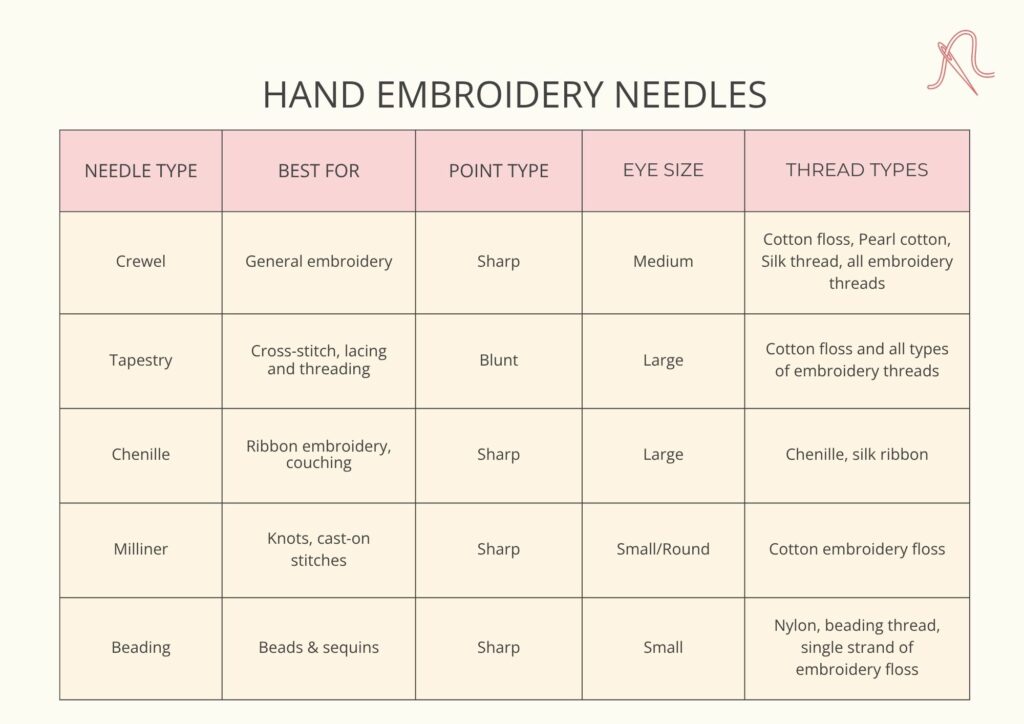
Crewel needles (also called embroidery needles)
- Sharp point.
- Medium length.
- The shaft is slightly thinner than the eye.
- Used for: general surface embroidery, crewel work, goldwork, whitework, and practically any embroidery technique that requires a sharp needle.
Tapestry needles (cross stitch needles)
- Blunt, rounded point.
- Medium length.
- Long eye, shaft slightly thinner than the eye.
- Used for: canvas work, cross-stitch. Also, this needle is handy for whipped and laced stitches because a blunt tip helps to avoid snagging the main stitches and bleeding fingertips.
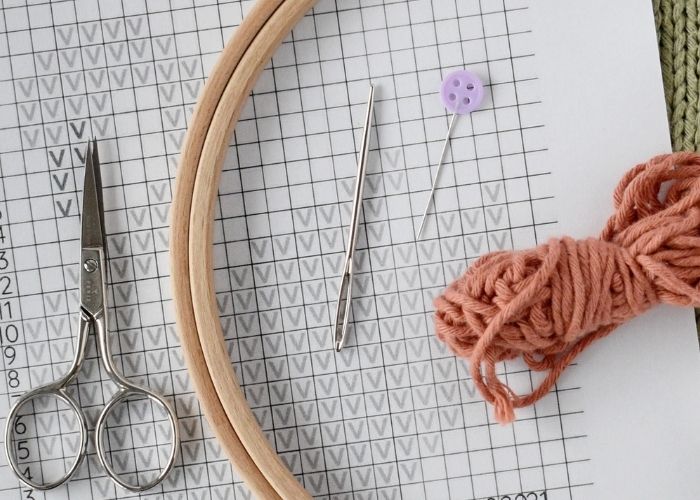
Chenille needles
- Very sharp point.
- Large eye, shaft lightly thinner than the eye.
- Used for: thicker or multi-stranded threads, braids, metallics, and chenille thread. Used in crewel and ribbon embroidery.
Milliner needles (Straw needle)
- Sharp point.
- Long and fine.
- Has a round eye that is not wider than the needle shaft.
- Used for: appliqué, bullion knots, cast-on stitch, and French knots. Because of the longer shaft and the eye of the same size as the shaft, this needle makes it easier to wrap the thread around the needle many times and pass it through the wrapped threads.
Beading needles
- Sharp point.
- Long, very fine shaft.
- Long, narrow eye.
- Used for: working with beads, cords, pearls, and sequins.
Other specialized needles
Besides the needle types listed above, you can come across other specialized needles created for a special task or purpose. Amongst these are Sashiko needles (longer and more rigid than standard embroidery needles), Ballpoint mending needles (with a ball tip on the end for mending fine knitwear), or Betweens – short, sharp needles for hand quilting.
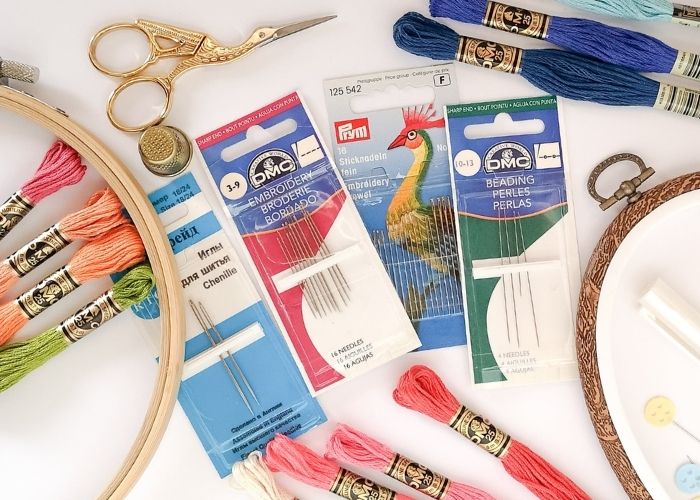
Needle sizes explained
How to choose the right needle for your project
When you decide on a needle for your next project, consider:
- What thread you are going to use? The shaft of the needle should be about as wide as the embroidery thread. If you use a standard 6-stranded embroidery floss, the needle size will depend on how many floss strands you use. For all 6 strands, I recommend using needle size 5 for 3-4 strands, No. 7 for 2-3 strands, and No. 9 for a single strand. Your choice will also depend on the fabric you choose to embroider on.
- How thick is the weave of the fabric? There should be no significant resistance in the material when pulling the eye of the needle through. If it’s hard to get the needle through, you should choose a larger one. The hole the needle makes should be large enough for the thread to pass through, but not too large.
- Embroidery stitches are you going to use. Tapestry needles are your choice if you do canvas work, cross-stitch embroidery, or whipping or lacing stitches. For bullion knots, French knots, or cast-on stitches – choose Milliner needles.
- What materials are you going to use? If you use thick wool or ribbon for embroidery, pick Chenille needles. For the bead embroidery, choose beading needles.
Best hand embroidery needles for beginners
If you are a hand embroidery beginner, I recommend you buy a set of crewel needles (embroidery needles) in different sizes. Most hand embroidery floss producers offer these sets.
Also, it is handy to have a couple of Milliner needles and Tapestry needles with a blunt tip. Milliner needles will be irreplaceable for French knots and bullion stitches. In contrast, tapestry needles are excellent for whipping and lacing in composite stitches.
Later, you can add other types of needles, selecting them based on the embroidery project you choose.
Some options I recommend:
Crewel needles
Tapestry needles
Milliner needles
Needle storage tips
Whatever type of needles you choose, remember to take good care of them. Your needles must be straight and have undamaged tips. They should slide effortlessly through the fabric, not pull at it or tear it. If the needle is corroded, bent, or no longer sharp, replace it with a new one.
There are many ways to keep your needles organized. My favorite tools and methods are:
- The needlebook. It is a small textile book made from felt fabric with pages to keep your needles, pins, and other essential embroidery tools like scissors and thimbles. It is very convenient if you embroider when traveling. Read the “Hand embroidered Needle Book Tutorial: Free embroidery pattern and easy step-by-step guide” and make your own personalized needle book.
- A pincushion. It is a small, stuffed cushion, typically 3–5 cm across. It is used to store pins or needles with their heads protruding, allowing for quick collection and organization. Pincushions generally are filled with ground walnut shells or steel wool to keep your needles sharp.
- Keep your needles in their original package, so you will always know their size and type.
If you keep losing the needles while you embroider or use more than one needle at a time, consider using a needle minder. This magnetic stitching accessory prevents your needles from getting lost when you need to take a short break from your stitching or as you are changing threads. They are made from two strong magnets with a decorative top and a plain backing magnet.
If you want to learn more about needle storage and organizing options, read the article “How to organize embroidery needles: Needle organization tips and storage ideas” on this blog.
FAQ: Hand Embroidery Needles
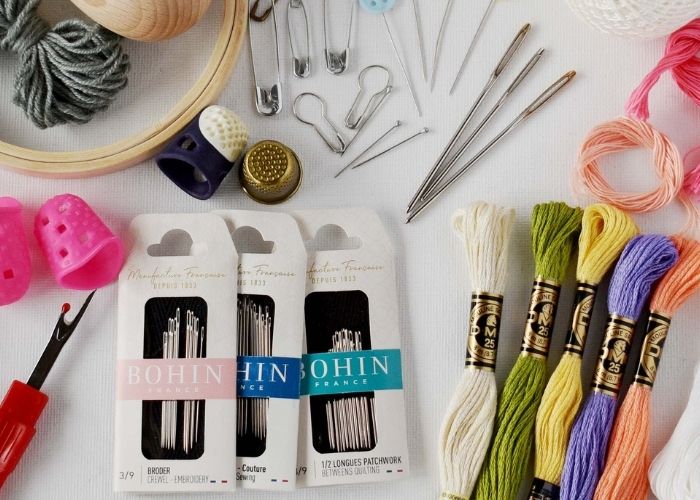
What are the best hand embroidery needles for beginners?
For beginners, a set of crewels (also called embroidery needles) in various sizes is the most versatile and easiest to start with. Look for a pack labeled “Embroidery Needles” by brands like DMC or PRYM. These needles have a sharp point and a medium-sized eye, making them perfect for most common embroidery stitches.
Can I use regular sewing needles for hand embroidery?
You can, but it’s not ideal. Sewing needles usually have smaller eyes that are harder to thread, especially with multiple strands of floss. Hand embroidery needles are designed to accommodate embroidery threads and different stitching techniques more comfortably and efficiently.
What size embroidery needle should I use?
Choose a needle size based on:
- Thread thickness: The needle’s shaft should be just wide enough to make a hole for the thread to pass through without damaging the fabric.
- Fabric weave: Tighter weaves = finer needles.
- Example (using stranded embroidery floss):
- 6 strands → Size 5 needle
- 3–4 strands → Size 7
- 1–2 strands → Size 9
What needle should I use for French knots or bullion stitches?
For stitches like French knots, cast-on stitches, or bullion knots, choose a Milliner needle. These needles are long, thin, and feature a round eye that’s the same width as the shaft, making it easier to pull the needle through wrapped threads without getting stuck.
Which needle is best for cross-stitch or canvas embroidery?
Use a Tapestry needle. It has a blunt tip that won’t split the fabric fibers, and its large eye is excellent for thicker threads or multiple strands. Tapestry needles are ideal for counted-thread techniques like cross-stitch and blackwork.
Can I use the same embroidery needle for beads?
Not usually. Beads and sequins often require a very narrow needle. Use beading needles, which are longer and thinner than standard embroidery needles, with a narrow eye that fits easily through small bead holes.
How do I organize and store hand embroidery needles?
Here are a few popular options:
- Needlebook: A felt fabric book to keep needles by size/type.
- Pincushion: Handy for frequent use and can help keep your needles sharp (especially when filled with wool or walnut shells).
- Needle minder: A magnetic holder that keeps your needle secure while you stitch or pause.
- Original packaging: Keeps size info intact and helps prevent mixing.
How often should I replace my embroidery needle?
Replace your needle if:
- The needle becomes bent, rusty, or dull.
- It snags fabric or splits thread.
- Needle doesn’t glide smoothly through your fabric.
A good needle should feel effortless. If it starts to resist or damage your materials, it’s time for a new one.
Over to you

When you stitch your next project, feel free to experiment. Try stitching with needles of different sizes, changing the size of the needle as you go. With some experience and practice, you will find your favorite needle size.
Hand embroidery needles are small but mighty and necessary embroidery tools. So powerful that it can make or break your embroidery experience.
There are two main characteristics to keep in mind when choosing the needle for your project: the type of needle and its size. Make these choices right, and the embroidery process will be fluid and relaxing.
A starter assortment of embroidery needles is enough to get started with embroidery. You can add more later!
And finally, remember to take good care of your needles and avoid leaving them on the sofa or floor, as this can cause injuries.


